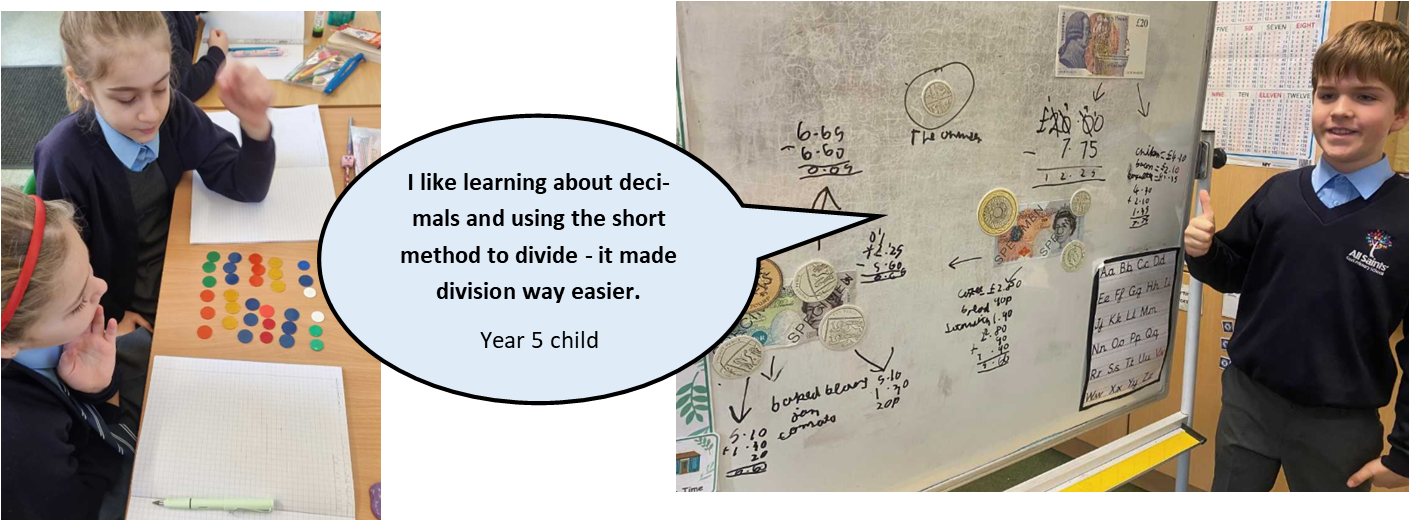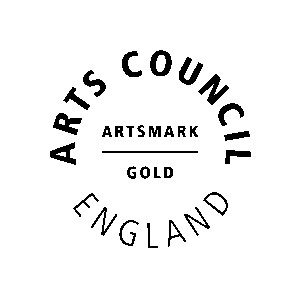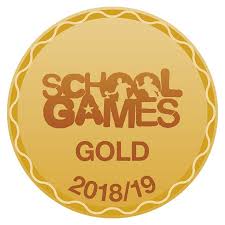What does maths look like at All Saints?
At All Saints’, the children receive high-quality maths lessons that are carefully sequenced to build on prior knowledge and allow for progression, following fluency, reasoning and problem-solving methodology. Our teachers follow the 'Teaching for Mastery Approach' so that our lessons reflect the knowledge of our pupils and do not move on until the children have fully grasped the concept in hand. In the main, we use the NCETM Spines, supplementing learning with White Rose Maths for topics, such as shape or statistics, that are not covered in the Spines. NCETM and White Rose are based on the National Curriculum with clear objectives, ensuring everything is taught in small steps, and at the right time, to suit the needs of the children. Children therefore develop a deeper understanding of mathematical concepts and are able to apply their knowledge and understanding through reasoning and problem-solving.
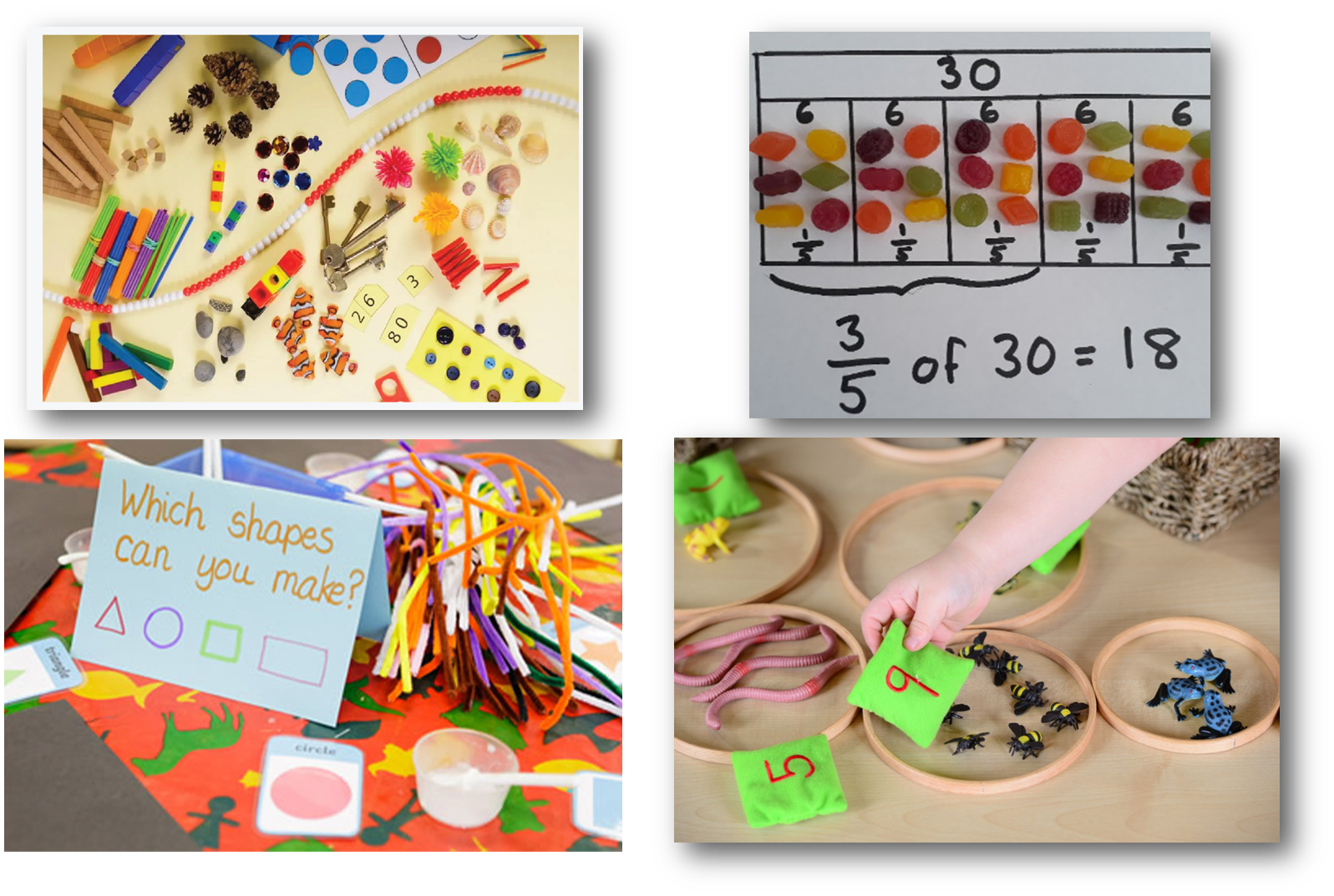
In lessons, you will see children working collaboratively on both reasoning and problem-solving. Pupils can develop a mathematical argument, justifying their answers and using mathematical language. This supports the identification of any misconceptions they may have before moving on. This teaching approach encourages children to master concepts with a deeper understanding, rather than quickly progressing through the units of work at a surface level.
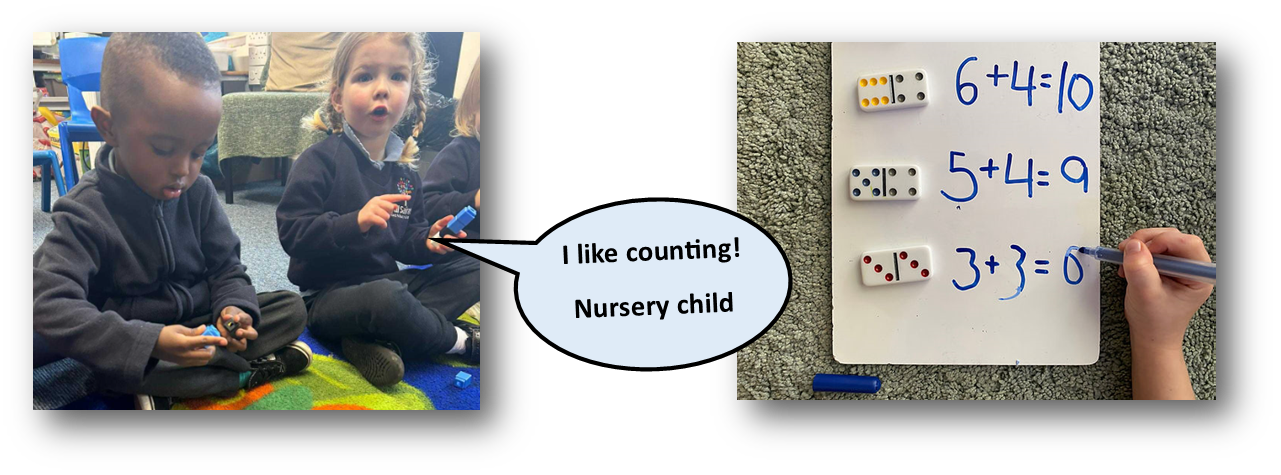
Maths is taught daily, as well as beginning each day with arithmetic practise, to ensure that key mathematical concepts within the four operations are embedded, and children can recall this information to see the links between topics in maths. We believe that times table practice is also integral to maths learning, with children developing their fluency in rapid recall of tables up to 12 x 12 by the end of Year 4. Thus, throughout the week, times table practice occurs in year groups 2-6 with their respective tables.
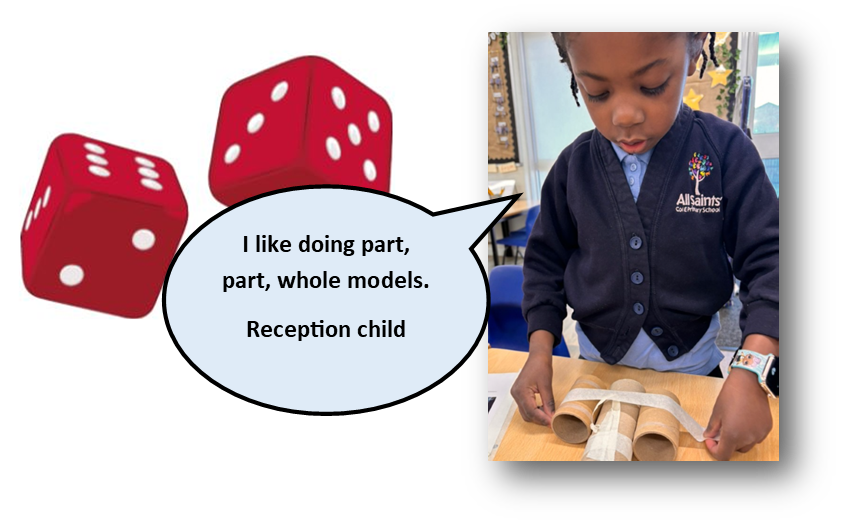
Within each of these lessons, teachers follow the Concrete-Pictorial-Abstract (CPA) approach in line with our school’s Calculation Policy. Each mathematical concept is introduced with concrete resources to allow all pupils to access new learning. We use many models in maths to explain key areas of learning: ten frames, Base 10, number lines, part-part-whole and bar model. These are used to support our children in the concrete and pictorial aspects of lessons before they are able to reach the abstract level of understanding. Children are familiar with these resources and can access them independently where needed.

In Key Stage 1 and 2, termly assessments are used as a diagnostic tool to ensure that teachers are adapting learning to meet the needs of all children and ensure that any necessary revision is done to meet the needs of children. Observations are used as an assessment tool in Nursery and Reception to record children’s progress and extend their learning.
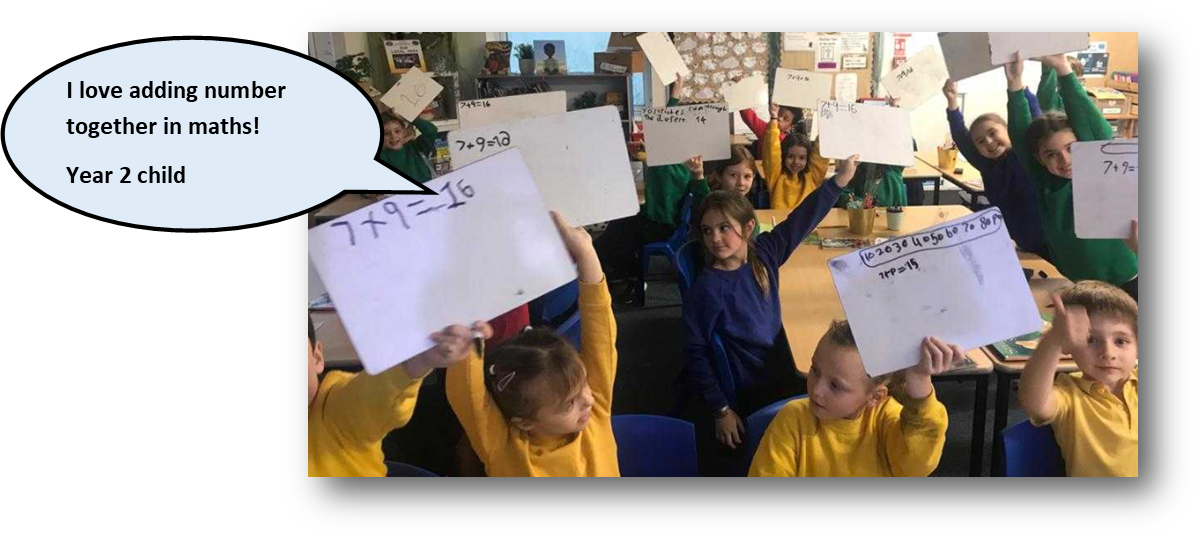
Lessons are personalised for each class and adapted within the classrooms to ensure that each child is given the appropriate level of support and challenge. Maths is taught in mixed ability groups/partners and learning tasks increase in difficulty – tasks are adapted to the needs of learners. Through the use of progression maps, we ensure that children are not being stretched outside their year group but rather deepened within it. For those children who are below the year group's curriculum, appropriate learning is provided to ensure tasks match their ability.

This enables our maths lessons to be inclusive of a range of abilities where children can access the concept at their own ability level. Furthermore, maths homework is set on a weekly basis in order to consolidate the children’s learning from the previous week. Where possible, mathematical links are also made with other subjects across the curriculum. For example, pattern seeking in art, drawing and interpreting line graphs in Science, measurement in Design and Technology etc.
